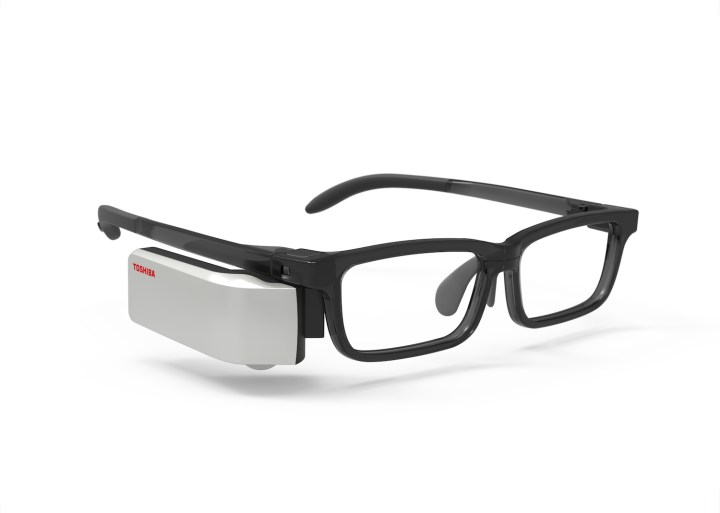
Its Wearvue glasses were officially unveiled just last month at the Wearable Expo in Tokyo, but the company has decided to scrap next week’s launch plans at the last minute.
“Because the glasses-type device had gained great interest, including among the media, we wanted to consider until the very last minute” whether to cancel the device, a company spokesperson told the Wall Street Journal on Tuesday.
Toshiba had invested a lot of time, money and effort in its smart glasses, with an early version of the device shown off to the public toward the end of 2014.
Aimed primarily at firms running factories and logistics centers as a way to perform tasks hands-free, Wearvue’s innovative design allowed it to do away with the obtrusive cube display seen with Google Glass that sits in front of the wearer’s right eye. Toshiba’s gadget projected information from an attached unit directly onto its specially designed right eyepiece that then reflected the data to the wearer.
“Wearvue is worn like a pair of glasses and, at only 50 grams, is designed to be light and comfortable enough for long periods of use,” the tech company said in recent promotional materials.
The move by Toshiba to ditch the product comes just weeks after the Japanese tech firm said it expected to report its biggest annual loss in its 140-year history for the full fiscal year ending in March. Rocked last year by a serious accounting scandal, the company is working to restructure its business with job cuts and business sell-offs. A number of products besides its Wearvue specs have also been axed.
Toshiba may have killed off its smart specs, but engineers at Google are apparently continuing with the development of Glass in a bid to make it work for businesses. The company has reportedly been distributing the new version to partners of the Glass for Work program after abandoning the original consumer-focused version of the device a year ago.


